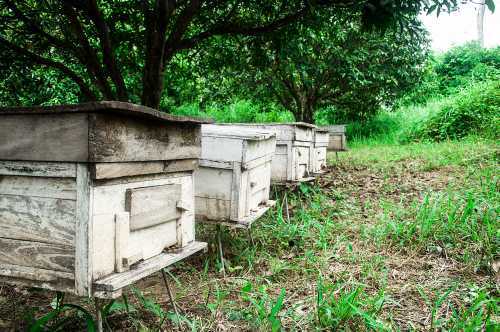Used Beekeeping Equipment
Purchasing used beekeeping equipment can save you a lot of money.
However, it can also be costly if you make too many mistakes - which can
easily be avoided with care.
Firstly, it is important to ensure
you do not enable the spread of disease from your second hand bee
keeping equipment, to your bees.
There is a very real risk of this happening, especially with bee hives and their components if they are not properly cleaned.
Used Beekeeping Equipment: 12 Important Tips For Buying And Cleaning
Some beekeeping tools and bee hive components can be very difficult to clean, due to the nooks and crannies where mites, virus and other nasties can hide. In such circumstances, it is better to dispose of such items carefully.
On the other hand, ensure that your
purchase is actually usable! Are the various bits and pieces
compatible, and do they fit together? Afterall, the aim of buying used
beekeeping equipment is to save money, so you'll want to ensure you pick
and choose wisely.

In short, if you are considering purchasing
second hand bee keeping equipment, including bee hive, bee suit or
jacket and tools, take a look at the following 12 tips before you
buy:
- It is better not to purchase any
used beekeeping equipment that would be a challenge to clean, such as
frames, as it will be difficult to treat them to prevent spread of
disease, pests and viruses.
- For the same reason, any
brushes are best purchased new. Cleaning brushes may be difficult, as
they may harbour disease that might not be properly eradicated during
cleaning attempts.
- Second hand clothing (such as beekeeping suit) should be properly laundered before use. Items that are difficult to launder are best avoided. Many beekeepers use ordinary rubber gloves which can be acquired relatively cheaply and separate hats and veils are difficult to launder properly and best purchased new.
- Second
hand bee hives should be in very good condition or they are a poor
investment. Use a blow torch to completely eliminate risk of disease
contamination, paying careful attention to the corners. Check that all
the parts belonging with the hive actually fit, and that it is complete!
- Ensure
all used beekeeping tools and supplies are free from residues of
pollen, wax, propolis, honey and comb. If it cannot be properly cleaned,
then do not use it.
- Do not use out-of-date, second hand
medications, feeds or other substances in your bee hive or on your
bees. It is simpler to purchase them new. Better safe than sorry!
- Clean
any bee products such as propolis from metal ware, and sterilize them
properly before use. Small metal ware can be placed in boiling water,
followed by a hot oven for a minute or two – but do not overheat as this
may cause damage to the equipment. Larger items can be sterilized using
a blow torch, but be careful not to damage the item.
- If possible, you can also place items in the freezer at -20°C for 48 hours before cleaning. This has the benefit of destroying insect pests, and will make it easier to scrape off any residues of propolis etc. Scrape the residues onto a sheet of newspaper, and burn it.
- If you receive any second hand comb or other bee products with your purchase or inside your honey bee hive, then burn them, to ensure you eradicate any risk of disease.
- To remove propolis from used beekeeping equipment, make a solution of washing soda and water. Use approximately 1kg of soda to 10 litres of water (you may also wish to add a few drops of mild household detergent, such as a little washing up liquid as used for cleaning tableware). Do be sure to wear protective gloves and an apron or overalls, protect your eyes – and take care!
- If you are thinking of purchasing second-hand bees, check that they are free of disease. A bee inspector or experienced beekeeper may be able to assist you. See my page on purchasing honey bees for additional tips: Honey Bees For Sale.
- Supplies From The Household Cupboard
Don’t forget your bucket, scissors, knife, etc. (These items are best purchased new and used only for beekeeping in order to maintain hygiene).
If you found this page helpful or interesting, I'd really be grateful if you would share it with others - if not this page, perhaps another, such as Gardening For Bees.
Thank you so much :) .